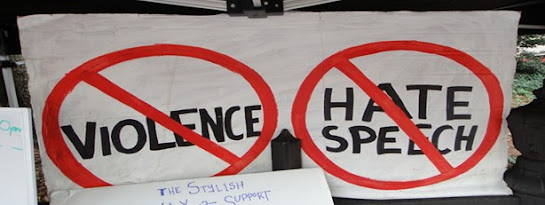INTRODUCTION
The online platforms provide an inexpensive communication medium that allows anyone to quickly reach million of users. Consequently, in these platforms anyone can publish content and anyone interested in the content can obtain it, representing a transformative revolution in the society. However, this same potential of online system brings together an important challenge these systems provide space for discourses that are harmful.to certain groups of people.
Article 19 gives all the citizens the right to freedom of speech and expression but subject to reasonable restrictions for preserving inter alia “public order, decency or morality.” Article 28 prohibits any religious instruction in any educational institution wholly maintained out of state funds.[1]
LAWS RESTRICTING THE FREEDOM OF EXPRESSION
Hate Speech isn’t characterized under Indian law. Be that as it may, a few arrangements under the Indian Penal Code, 1860 and a couple of different resolutions limit discourse on different grounds. On paper, such limitations on the protected right to the right to speak freely of discourse and articulation are substantial on the off chance that they are sensible. The limitations ought to be as thin as could be expected under the circumstances and should work as a special case to an individual’s entitlement to the right to speak freely of discourse and articulation, not the standard. It is strongly said that India punishes hazardously as well as penalizes hate speech but we don’t know how far is this true.
Section 153A of the Indian Penal Code makes “promoting enmity between different groups” a crime, 153B penalises expressions prejudicial to national integration, and 295A and 298 control speech that could wound religious feelings. Section 505, in turn, deals with public mischief and the spreading of rumours.[2]
Section 505(1) and 505(2) makes the making, publishing or circulating of any statement or rumour an offence, which is likely to incite any class or group of persons to commit any offence against other class or group of persons, or promotes or is likely to promote feelings of enmity, hatred or ill-will between different religious, racial, language or regional groups or castes or communities. In Section 505(2), words “whoever makes, publishes or circulates” cannot be interpreted disjunctively but only as supplementary to each other. If it is construed disjunctively, any person, making a statement that may attract section 505, would be held liable without any publication or[3] circulation.
Sadly, this isn’t the situation. The arrangements in the IPC that force such limitations are a typical example of helpless drafting. They utilize ambiguous language to condemn acts, for example, advancing disharmony or sentiments of hatred between gatherings or insulting the strict opinions of a network. While the courts have perused down the extent of a portion of these arrangements after some time, they have likewise more than once maintained their established legitimacy. It is incautious to keep on depending on the legal executive to shape the translation of these arrangements later on.
India’s proposed rules incorporate arrangements pointed toward containing these inescapable breaks in the mass of oversight. In the event that unlawful substance some way or another makes it past a stage’s channel, the organization has 24 hours to eliminate it, and must track the evacuation for 180 days. The proposed change likewise expects organizations to turn over data about the makers or senders of substance at the command of government offices, which would drive start to finish scrambled applications like WhatsApp or Signal to construct a secondary passage, trading off the security of clients around the world for the sake of Indian government surveillance.
It is likewise the situation that in spite of the endeavours of the legal executive to get control over the rein of the provisions, they have a very much reported history of being manhandled to target minority voices, specialists, and protesters. This is an away from of the authoritative purpose behind such laws. Checking disdain discourse is intended to secure those against whom it is focused on, empowering them to communicate unafraid of response. The incongruity of the current arrangements being utilized to target genuine activities of free discourse drives home the need to eliminate them from the resolution. The council must wake up to this risk and annulment these not well drafted arrangements.
CONCLUSION
Hate Speech covers numerous types of articulation which spread, induce advance or legitimize contempt, brutality, and victimization an individual or a gathering of people. This prompts grave of threat to the general public and rule of law whenever left unaddressed. Thusly, hate speech is a bigotry which adds to detest wrongdoing.
It has consistently been thought of on the off chance that hate speech is given freehand, at that point it will be hard to separate between hate speech and the right to speak freely of discourse. In this way, it is proposed that both the terms of hate speech and brutality ought to go inseparably.
REFERENCES
1. https://en.wikipedia.org/wiki/Hate_speech_laws_in_India
2. https://scroll.in/article/832978/does-india-need-stronger-hate-speech-laws-the-law-commission-seems-to-thinks-so
3. https://criminallawstudiesnluj.wordpress.com/2020/02/03/the-peril-of-hate-speech-in-india/
4. https://criminallawstudiesnluj.wordpress.com/2020/02/03/the-peril-of-hate-speech-in-india/
5. https://theconversation.com/the-challenge-of-drawing-a-line-between-objectionable-material-and-freedom-of-expression-online-108764
Author: Yashika Bondwal


